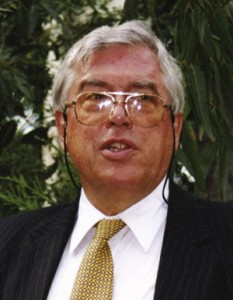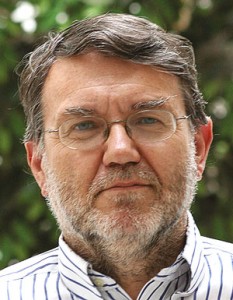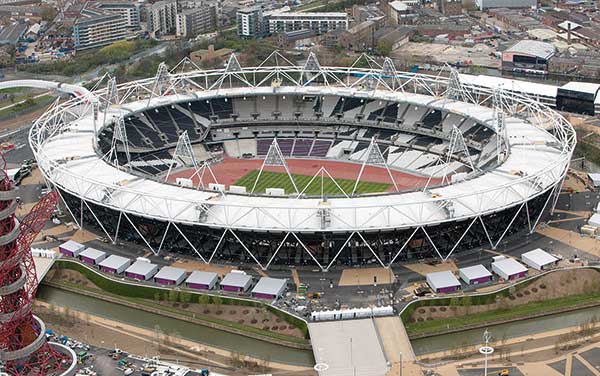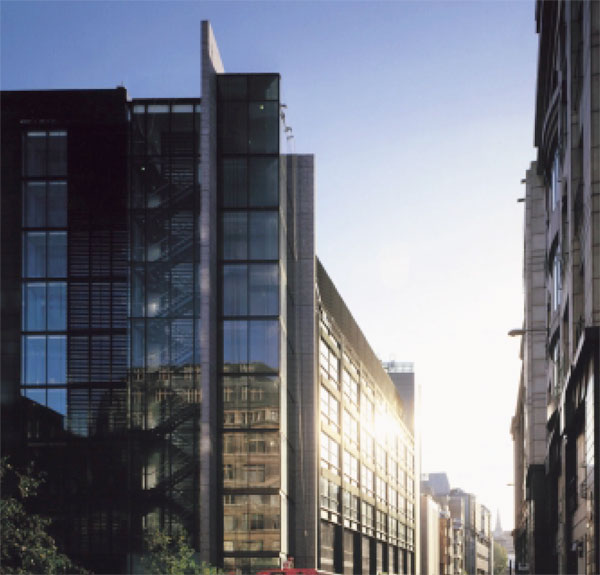SSDA Awards
Structural Steel Design Awards 2007
Introduction
by David W. Lazenby CBE – Chairman of the Judges
Yet again the SSDA scheme has come up trumps, with a marvellous set of short-listed structures. From dramatic footbridges which lift the spirits, to the “Cold War” museum and the re-creation of its grim memories – from an iconic theatre in London, to shimmering garden pavilion roofs in the North East – steelwork shows its astonishing versatility and effectiveness. This year’s submissions often reflect great success in satisfying the clients, whilst delighting the public who use the finished projects.
The judges have again been impressed by the skills and professionalism of the project teams, together with the clients whose vision and determination has been vital. We have seen exciting submissions from around the UK, often reflecting regeneration of our towns and cities, benefiting from the care and attention these schemes have received. We have seen a strong field of bridges, ranging from large road/rail crossings to spectacular footbridges which can do so much to enhance their surroundings. The building projects have included an unusual London office block and an impressive museum structure which creates an ambience fitted to its gritty theme, and some “little gems” of small projects which are big in skills if not in scale.
The professionalism of the industry grows ever stronger, with highly motivated people exercising their skills in a constructive way to achieve noteworthy results.
The judges and the sponsors thank all those who made the submissions, and we look forward to even greater numbers and variety in future. We all gain benefits from the efforts which have achieved such success.
The Judges
Chairman of the Structural Steel Design Awards judges David Lazenby had a distinguished career as a consulting engineer before taking a new turn in the late 1990s to give British Standards new focus and direction. He also led the huge pan-European exercise to develop the Eurocodes.
Mr Lazenby’s career began as an assistant engineer with Balfour Beatty in 1959. In 1964 he moved to consultant Andrews Kent & Stone, where he stayed for over 30 years and became managing partner and subsequently a director. In 1990–91 he was one of the youngest ever Presidents of the Institution of Structural Engineers.
In parallel he had become involved in developing standards, advancing from membership of technical committees and sector boards to became a non-executive director of the BSI Group.
In 1997 he became BSI’s Director of British Standards, one of three executive directors and directly responsible for over 500 staff and a budget of over £45M.
His experience both as a user of standards and as a committee and board member helped him to bring a new focus on market relevance and he is credited with bringing success to the organisation and establishing it as a leader in its field, as well as making it profitable, almost unique among national standards bodies.
Since 2003 he has operated his own consultancy, Eurocode Consultants Limited.
Martin Manning joined Ove Arup in 1968 on graduating from Cambridge University and has stayed there ever since. He is now a director. He has worked primarily on structural designs which have required working from first principles rather than applying empirical rules. His work has taken him to Arup offices around the world, including Zambia, Tehran and Hong Kong, and he has worked with a roll-call of top architects, including Frei Otto, Lord Foster, Richard Rodgers, Michael Hopkins and Nicholas Grimshaw.
Projects and buildings he has been involved with include the Reichstag refurbishment in Berlin, Chek Lap Kok airport in Hong Kong and the Thameslink 2000 station at Blackfriars in London. He is a Fellow of the Royal Academy of Engineering. At the end of 2006 he took over as Chairman of SCI.
 Gerry Hayter has spent his career in transport, mainly in London. He joined London Underground as a graduate in 1975, working on the design of railway bridges, lifts and stations. After 10 years he joined the Bridges Engineering Division of the Department of Transport where he developed standards for the assessment of highway bridges and structures and co-ordinated a survey of older UK highway structures.
Gerry Hayter has spent his career in transport, mainly in London. He joined London Underground as a graduate in 1975, working on the design of railway bridges, lifts and stations. After 10 years he joined the Bridges Engineering Division of the Department of Transport where he developed standards for the assessment of highway bridges and structures and co-ordinated a survey of older UK highway structures.
In 1994 he joined the London Network Management Division of the Highways Agency, responsible for the maintenance of highway structures in West London. A number of senior technical posts at the agency followed, culminating in his present appointment as Group Manager of the Pavements, Geotechnics and Structures Group.
 Christopher Nash, is Managing Partner of Grimshaw. He graduated in 1978 from Bristol University School of Architecture, and joined Grimshaw in 1982. As an architect he was responsible for many of the practice’s high profile buildings. These include – from his early years – the Financial Times Printing Works in London’s Docklands and the British Pavilion for the Seville Expo 92, The Western Morning News headquarters in Plymouth, the RAC Regional Headquarters in Bristol and many other projects.
Christopher Nash, is Managing Partner of Grimshaw. He graduated in 1978 from Bristol University School of Architecture, and joined Grimshaw in 1982. As an architect he was responsible for many of the practice’s high profile buildings. These include – from his early years – the Financial Times Printing Works in London’s Docklands and the British Pavilion for the Seville Expo 92, The Western Morning News headquarters in Plymouth, the RAC Regional Headquarters in Bristol and many other projects.
In his current role, Chris is responsible for the strategic planning of the firm’s worldwide business and for ensuring the practice delivers such high profile and diverse projects as BAA’s Stansted Airport Generation 2 Masterplan, Phase V of the Eden project and the Cutty Sark conservation project.
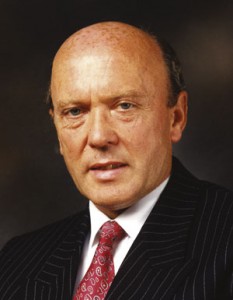 Joe Locke retired in 2004 from his position at William Hare, where he was responsible for the engineering aspects of the company’s activities and also Executive Director of subsidiary Westbury Tubular Structures; having previously retired in 1998 as Chief Executive Officer of Watson Steel. Joe was an apprentice with Watson and sat his associate membership of the Institution of Structural Engineers at only 23.
Joe Locke retired in 2004 from his position at William Hare, where he was responsible for the engineering aspects of the company’s activities and also Executive Director of subsidiary Westbury Tubular Structures; having previously retired in 1998 as Chief Executive Officer of Watson Steel. Joe was an apprentice with Watson and sat his associate membership of the Institution of Structural Engineers at only 23.
Joe worked at home and overseas on a considerable number of high prestige contracts, including Sellafield nuclear power station’s massive thermal oxide reprocessing plant and the terminal building of Kansai airport, Japan. Joe Locke was awarded an MBE in 1990 for his contribution to the structural steelwork industry.
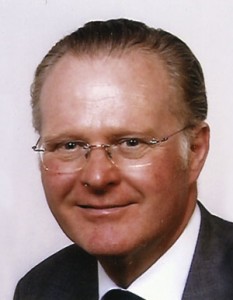 Architect and planning consultant Robin Booth graduated in architecture from Cambridge University and has a Master’s in Urban Design from Edinburgh University. He has been Project Architect and Partner in charge of prestige projects like the Standard Chartered Bank headquarters and has maintained a career long interest in town planning.
Architect and planning consultant Robin Booth graduated in architecture from Cambridge University and has a Master’s in Urban Design from Edinburgh University. He has been Project Architect and Partner in charge of prestige projects like the Standard Chartered Bank headquarters and has maintained a career long interest in town planning.
He has experience in the public and private sectors, on a wide range of projects from local authority and student housing to leisure and corporate headquarters buildings, and also on urban regeneration sites.
He was Partner and then Director with the well known architectural practice Fitzroy Robinson Limited from 1980 to 2001 and subsequently Architect Director of Building Design Partnership, London Corporate Group. He is currently working on his own as a Planning and Architectural Consultant.









